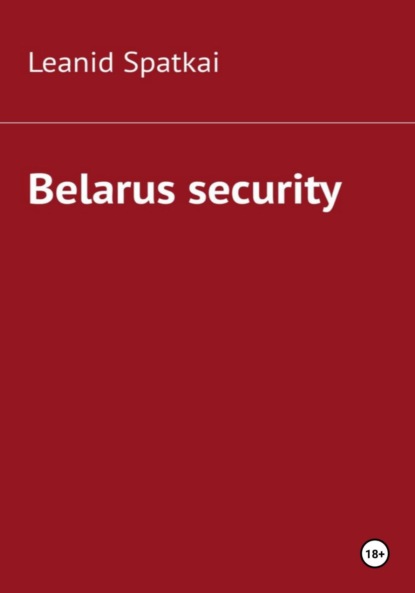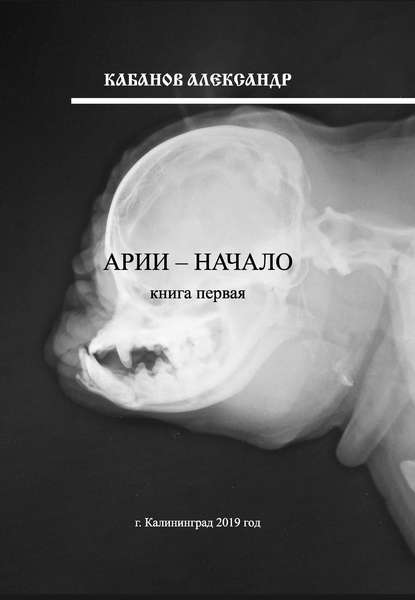- -
- 100%
- +

w much does the border cost?
On June 1, 2018, during a visit to the outpost of Dzivin, the Pinsk border detachment, where the border guards protect 32 km of the state border of Belarus with Ukraine, the President of Belarus made two statements on border security issues of the country.
The first of them concerned the increase in the number of servicemen of the border service: there are not enough of them despite the presence of latest technical means of border protection. The increase is connected with the strengthening of the protection of the border of Belarus with Ukraine as well as with the increase in the passenger and cargo traffic through checkpoints at the borders of Belarus with Poland, Lithuania, Latvia and Ukraine. In this regard, the President of Belarus instructed to study the possibility of increasing the number of border guards by 2—3 thousand people for the cost of the reduction in the Armed Forces, which will make it possible to increase the number of personnel of the outposts by 5—10 people, thereby increasing the density of border security. In addition, as President Lukashenka stated, «at the outpost they live like at home. here is no bullying, hazing» and «servicemen here will be taught better than in the army», because the border guards are «constantly on alert». According to Lukashenka, «their training is really good. In border guard they give to people more skills for the future, then at least in ordinary motorized rifles». The specificity of the border guard service is that border guards in real conditions handle the skills of actions in the isolated mobile units, which is very important in the context of current armed conflicts.
The second statement of the President of Belarus concerned the status of the Belarusian-Russian border – he, as they say, openly suggested the Russians to decide on the format of the presence of their border guards on the border with Belarus, after which the Belarusian authorities will take symmetric measures, up to the deployment of the border guard. «But we can not be like Russians. They do not understand what they want and what they do on the Belarusian-Russian border. Let them define. When they define what to do – we have no problem answering. We are ready to respond adequately at any time. If they want to close the border – no problem. They will close the border – we must also establish control at the border in response» – Lukashenka said. He also stated that this issue will be discussed during the Supreme State Council of the Union State in June.
However, it is obvious that this issue was not discussed at the Supreme State Council. Even if it was discussed, there is no result of the discussion, since Aliaksandr Lukashenka stated that they agreed to deal with this problem in the near future and «the remaining issues on the crossing of the Belarusian-Russian border should be settled».
These two statements of the President of Belarus were interpreted by many experts and analysts as a complete decision to deploy the border guard at the Belarusian-Russian border: the increase in the number of border guards will not only increase the density of protection of the border sections with Ukraine, but also create the necessary prepared reserve that can be used to protect the border with Russia.
For example, the «Belarus in Focus» information bureau stated that Lukashenka was ready «to establish full control of the eastern border»: «The Belarusian top bureaucracy seems to have realized the inevitability of the deployment of a full border control on the border with Russia. Which can begin as soon as Russia’s intentions are specified».
However, such interpretations of Lukashenka’s words are very far from reality. There are several reasons for this. One of the most significant of them is the «price of the issue». Moreover, not only the cost of delimiting and demarcation works and the creation of a border infrastructure, but the cost of time necessary to create a full-fledged border guard on the Russian section of the State Border of Belarus, which, incidentally, is not even marked on the ground, and its passage on maps is often conditional.
By the time Belarus adopted the Declaration on State Sovereignty, it had only its state border with Poland, which was established by the Treaty between the USSR and the Polish Republic on the Soviet-Polish state border of August 16, 1945. The borders with other neighbouring countries – Lithuania, Latvia, Russia and Ukraine, did not have the status of the State Border. I order to give them this status, delimitation and demarcation were required. Since the Baltic republics were the first to declare their withdrawal from the Soviet Union, then the task of delimitation and demarcation of the border with them has become a priority.
On November 25, 1991, the working groups from representatives of ministries and departments for participation in the joint commission for the delimitation of the border with Lithuania were approved by the decree of the Council of Ministers of the Republic of Belarus. The first official talks of this commission took place in Vilnius on January 3, 1992, and the delimitation of the border of Belarus with Lithuania was finished on February 6, 1995 with the signing of the agreement on the state border, ratified on April 25, 1996. The demarcation of the border was completed on March 10, 2006, installation of a buoy at Lake Gilut – the last border mark on the border of Belarus and Lithuania.
In total, the mixed emarcation commissions installed 1957 border marks on this border with a length of 678,819 km. The full demarcation of the State Border of Belarus with Lithuania was completed on February 2, 2007.
Delimitation and demarcation of the Belarusian-Latvian border were much faster. This was due to both the small extent of the border, and the fact that it passed along the border between the USSR and Latvia, established in 1923, and the border between Latvia and Poland, established in 1933—1935. The demarcation documents were recognized by both states and were used by the mixed Belarusian-Latvian commission in their work. The delimitation of the state border between Belarus and Latvia was completed on February 21, 1994 by signing the Treaty on the Establishment of the State Border between the Republic of Belarus and the Republic of Latvia in Minsk, which entered into force on May 19, 1995. The agreement confirmed that the line of the state border between Belarus and Latvia coincides with the line of the former state border between the USSR and Latvia as of June 16, 1940.
The demarcation of the Belarusian-Latvian border was completed on October 3, 2006 with the installation of the last border sign near the settlement Karasina of Braslau region. Totally, 425 border signs were installed on the Belarusian-Latvian border (length of 172,912 km). More than 100 km of roads and 8 km of gates through marshes were built along it. Finally, the demarcation of the State border of Belarus with Latvia was completed on November 6, 2008.
Preparatory work on the delimitation and demarcation of the state border of Belarus and Ukraine (the length of the administrative boundary line of the Ukrainian SSR and Byelorussian SSR is 1084.2 km) began in late 1992, when the Decree of the Presidium of the Armed Forces of the Republic of Belarus (dated December 7, 1992) approved the composition of the official Belarusian delegation to conduct negotiations with Ukraine on the delimitation and demarcation of the Belarusian-Ukrainian state border.
The Treaty between the Republic of Belarus and Ukraine on the state border was signed on May 12, 1997. In addition to the delimitation card, the Treaty included the Protocol and a description of the passage of the state border, which was supposed to simplify the implementation of demarcation works. Thus, the delimitation of the border between Belarus and Ukraine was carried out in five years.
Ukraine ratified the Treaty on July 18, 1997, and Belarus – only on April 2, 2010. In this regard, no demarcation work at the border was conducted. Belarus explained delay in the process of ratification of the Treaty with the fact that the authorities agreed to ratify the Treaty only after Ukraine’s repayment of the state debt to Belarus. Only in 2009 the problem of debt repayment was resolved, after which the House of Representatives of the National Assembly of the Republic of Belarus ratified the Treaty. However, the exchange of instruments of ratification did not take place, because this issue once again was connected with the issue of Ukraine’s repayment of public debt to Belarus. Only during the next visit of President Lukashenka to Ukraine on June 18, 2013 a protocol on the exchange of instruments of ratification between the Ukraine and the Republic of Belarus «On the State Border» of May 12, 1997 was signed.
After the exchange of instruments of ratification on 24—25 September and 5—7 November 2013, there were two meetings of the Common Belarusian-Ukrainian Demarcation Commission. On November 13, 2013 in the area of international checkpoint Senkovka of Chernihiv region at the first sign of Belarusian-Ukrainian border was established, which was the beginning of demarcation works at the border. Originally it was planned to finish the demarcation work in 2020, but due to financial difficulties and the complex nature of the terrain at the border, the deadline for completion of demarcation works was postponed to 2026.
Thus, by the present time, only the State Border of the Republic of Belarus with the Russian Federation remains unmarked (its status has been established by the Decree of the Supreme Council of the Republic of Belarus of June 11, 1993 No. 2379). There are several reasons for this. The first and the main one is political.
On March 15, 1994, on the basis of the Law of the Republic of Belarus «On the State Border of the Republic of Belarus» of November 4, 1992, article 3 of which states that «the Republic of Belarus cooperates with foreign states in the protection of the State Border on the basis of universally recognized principles and norms of international law», an agreement between the Government of the Republic of Belarus and the Government of the Russian Federation on cooperation on border issues was signed. On April 15, 1994 a tripartite Memorandum on cooperation in security State borders of the Republic of Belarus, the Russian Federation and Ukraine was signed. In the development of the provisions of the Memorandum, on February 21, 1995, the Republic of Belarus and the Russian Federation concluded a Treaty on joint efforts to protect the state border of the Republic of Belarus.
According to the Treaty, the term «State Border of the Republic of Belarus» means the State Border of the Republic of Belarus only with the Republic of Latvia, the Republic of Lithuania and the Republic of Poland, and the border guard of the Republic of Belarus cooperates with the Border Guard Service of the Russian Federation. In addition, Belarus and Russia have assumed mutual obligations to ensure each other’s interests on their external borders, i.e. the Border Guard Service of Belarus is protecting the State Border of Russia by protecting the State Border of Belarus with Poland, Latvia, Lithuania and Ukraine. That is, from May 11, 1995 (the date of the entry into force of this Treaty) no unit of the border troops, and now – of the Border Guard Service of Belarus has never stood up for the protection of the State Border of Belarus with Russia. Therefore the issues of its delimitation and demarcation did not arise, and the only symbolic border pillar at the checkpoint «Redki» was installed on May 25, 1995. The next day it was solemnly ritually dug out of the soil by the President of Belarus Aliaksandr Lukashenka and Russian Prime Minister Viktor Chernomyrdin.
However, later, in connection with carrying out demarcation works on the borders with Latvia and Ukraine, two more border pillars were added on the border of Belarus with Russia, which are unlikely to be dug out.
The first of them was installed on January 28, 2010 at the junction point of the borders of Belarus, Russia and Latvia, at the confluence of the rivers Nyaverytsa and Sinyuha (Zilupe) near the Friendship Barrow.
The second one, at the junction of the borders of Belarus, Russia and Ukraine, near the «Monument of Friendship» was installed on November 13, 2013.
In order to ensure practical cooperation between the border agencies of Belarus and Russia, the Agreement of March 15, 1994 established a joint Coordination Council. Also, in order to pursue a coordinated border policy, the Border Committee of the Union of Belarus and Russia was established in 1997. It was renamed into the Border Committee of the Union State in 2000.
In order to implement coordinated decisions, to ensure the practical cooperation of the border troops of Belarus and Russia in the protection of the State Border of Belarus, the Operational Group of the Border Troops of the Russian Federation under the Main Directorate of the Border Guard Troops of the Republic of Belarus was established. At the same time, under the Federal Border Service of the Russian Federation the Group of Representatives of the Main Directorate of the Border Troops of the Republic of Belarus was established as well. The number, structure and procedure for the formation of the Operational Group are determined jointly by the heads of the border agencies of Belarus and Russia.
In addition, the Agreement of March 15, 1994 established that Belarus and Russia «shall, on the basis of equal shares, finance the construction and equipment of the State Border of the Republic of Belarus with the Republic of Latvia and the Republic of Lithuania» and that Russia will render the necessary assistance to Belarus in «technical support of its border troops, as well as in the development, placement of orders, manufacturing, introduction and repair of weapons, equipment and equipment used in the protection of the State Border of the Republic of Belarus» and in «training of the staff, including younger professionals».
The Treaty on Joint Efforts to Protect the State Border of Belarus was further developed with the adoption of the Program of Action of the Republic of Belarus and the Russian Federation on the Implementation of the Treaty on the Establishment of the Union State on December 8, 1999.
According to this program, the implementation of the long-term strategy of border cooperation was carried out in three stages. During the first one, in 1999—2000, the development of approaches and preparation of proposals for the approximation of the regulatory framework and the identification of priority measures for the integration of border agencies was carried out. The second one, in 2001—2005, was dedicated to the unification of the regulatory framework, as well as the implementation of reforms in the field of the border policy of both states. Since 2005, the third stage began, during which the formation of a system for protecting the borders of the Union State and the creation of a unified border and customs control system at the borders were completed Also within the framework of the Agreement on Joint Efforts to Protect the State Border of the Republic of Belarus of February 21, 1995, Russia directly finances the creation of border infrastructure facilities, as well as rendering assistance to the Border Guard Service of Belarus in other areas of cooperation. For example, the training of Belarusian cadets – border guards in the Moscow and Kaliningrad military institutes of the Border Guard Service, the branches of the Military University of Radiation, Chemical and Biological Defence, the Military Financial Economic University, the Moscow Military Conservatory, and the Military Institute of Physical Culture and Sports of Russia. The training of Belarusian border guards is carried out at the Academy of the Border Service of the Russian FSB, the Military Financial and Economic University of Russia, in clinical residency. Also, the Academy of the Border Guard Service of the Federal Security Service of Russia is training border officers with higher military education and training the teaching staff of the Border Service of Belarus.
The second reason why the border of Belarus and Russia (1,283 km long, according to the data of the Federal Agency for the Construction of the State Border of the Russian Federation – 1,239 km), remains unmarked – is financial issue.
The cost of demarcation of the state border of Belarus with Lithuania and Latvia amounted to USD 13.5 million, including 4.66 million from gratuitous funds under the TACIS program of the European Union, and 8.84 million from the state budget of Belarus. Considering that the length of the border between Belarus and Latvia is 172,912 km, and with Lithuania – 678,819 km, the costs of demarcation of each of the 851,731 km of these sections of the State Border of Belarus amounted to about USD 15,850. Approximately the same cost of demarcation is applicable to the State Border of Belarus with Ukraine – USD 17.2 million per 1,084.2 km (of which 325 km is the water area along the Dnieper, Sozh and Prypyats rivers), although there were other smaller numbers. For example, on June 25, 2014, at a press conference following the results of the 42nd meeting of the board of the border committee of the Union State, the chairman of the State Border Committee of Belarus, Colonel-General Leanid Maltsau said that the cost of demarcation of the border with Ukraine would be 10 million euros. Approximately the same amount was announced by the chairman of the State Border Committee, Major-General Igor Rachkovsky on January 19, 2010.
However, given the repeated statements of both representatives of Ukraine and Belarus that «the assistance of European partners would be very welcome», and that it is necessary to intensify the attraction of international technical assistance, for example, under the US government’s expert control and border security program and the programs of the European Union, as well as the postponement of the demarcation deadline from 2020 to 2026, it is clear that even the amount of USD 17.2 million is not yet final. Although in order to save money and time, it was decided to designate the majority of the land border with bilateral border pillars. One side of the pillar with the state coat of arms of Belarus is facing Ukraine, and another one with the state coat of arms of Ukraine is facing Belarus. This type of designation within the framework of demarcation of the border is used for the first time.
Thus, by analogy, the cost of demarcation of the border of Belarus with Russia will amount to no less than USD 20 million or 2 million per year, with demarcation over a period of 10 years.
However, this is only the cost of demarcating the border. In addition to them, much greater resources will be required for the creation of a border infrastructure: security and detection systems, the locations of border units, roads, etc. Currently, according to the terms of the Treaty on Joint Efforts to Protect the State Border of the Republic of Belarus of February 21, 1995, Russia has provided and is providing assistance to Belarus in material and technical support for its border troops, and now – Border Guard Service, in developing and placing orders, manufacturing, introduction and repair of weapons and equipment used to protect the state border of Belarus. Russia also financed and is financing equipping the State border of Belarus with Latvia and Lithuania, including construction of border infrastructure facilities: checkpoints, border posts, posts, residential buildings, etc.
Back in 1995, after the conclusion of the Treaty on Joint Efforts to Protect the State Border of Belarus, the Union program for the development of borders for 1996—2001 was adopted. To implement this program, 222.7 million Russian rubles were allocated from the Union budget. According to the State Investment Program of Belarus for 1996—2001, 1.49 billion Belarusian rubles was used to put into operation seven objects. In total, 7.29 billion Belarusian rubles allocated from the budgets of Belarus and Russia were used for this period and 28 objects were commissioned. Thus, the share of Russia in financing the creation of the border infrastructure of Belarus amounted to almost 80%.
The Decree of the Supreme State Council of the Union State of December 26, 2001 No. 9 approved the «Program for the development of the external border of the Union State for the period 2002—2005», the total budget of which amounted to about 2.5 billion Russian rubles. Of this amount, about 1.2 billion Russian rubles were spent on equipping the border sections with Lithuania and Latvia. According to the State Investment Program of Belarus in 2002—2006, 17.27 billion Belarusian rubles of budgetary funds, and in total – 80.6 billion Belarusian rubles of means of budgets of Belarus and Russia was spent, for which 33 objects were put into operation. In addition, 520 million Belarusian rubles allocated free of charge under the European Union Program and the United Nations Development Program «Strengthening Border Management in the Republic of Belarus» (BOMBEL) were spent.
In 2007, according to the State Investment Program, capital investments in the amount of 8.47 billion Belarusian rubles were spent.
In total for 1996—2011, Russia’s expenditures on the construction of the State Border of Belarus with Lithuania and Latvia amounted to about 4.5 billion Russian rubles. or about USD 150 million. Thus, 1 km of this section of the State border of Belarus costed about USD 180 thousand, which is more than 10 times higher than the cost of demarcation of this territory.
In addition to these funds, during the implementation of the program «Strengthening the border security of the Union State for the period 2012—2016», adopted inDecember 2012, Belarus annually got about 1 billion Russian rubles from the Union State budget. These money was used to build border facilities, purchase new equipment, conduct construction on the border with Lithuania (in the area, where Belarusian nuclear power plant is being built) of border posts and the reconstruction of the «Kamenny Loh» border crossing.
In this regard, it is obvious that the amount of expenses for the creation of a border infrastructure on the State Border of Belarus with Russia will be at least USD 240 million, and the total cost of demarcation and the creation of a border infrastructure is approximately USD 260 million.
Thus, taking into account on the finance allocated for the creation of infrastructure on the State Border of Belarus with Lithuania and Latvia and comparing it with the amounts of income and expenditure items of the republican budget, it is obvious that the creation of a border infrastructure on the State Border of Belarus with Russia will be extremely difficult task for Belarus.
However, in addition to the creation of a border infrastructure, at least two border detachments, for example, in Orsha, Mstislaul or Krychau need to be formed to protect the state border of Belarus and Russia. It is also necessary to increase the size of Polatsk and Homel border detachments in order to form at least 50 border posts and 10—15 automobile and railway checkpoints on the border with Russia. Thus, it is necessary to increase the number of border guards not less than 1.5 times, which requires a corresponding increase in the expenditures of the republican budget.
Moreover, the staffing of the new units will be a very serious problem, because at the moment, border service agencies already have some problems with the staffing of border control units. Not only military conscripts, but also contract servicemen, in the first place – ensigns, are essential. The existing staffing shortage is a consequence of the discrepancy between the conditions of the border service and the size of the wage of servicemen as well as the almost complete absence of any benefits for them. Thus, in order to solve the problem of staffing, it is necessary not only to increase the wages of the servicemen, but also to restore the system of social benefits, which will also lead to an increase in the expenditures of the republican budget.
Thus, due to all the above reasons, at present the establishment of the State Border of Belarus with Russia, even in connection with the hypothetical exacerbation of interstate relations, is extremely costly for Belarus. In addition, as the experience of a number of countries testifies, the presence of engineering structures on the border is not a guarantee of protection from its possible violations, and much less from armed invasion.






